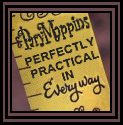Teaching Tuesday: Lesson 1--Know Your Costs And Shop Around
Welcome to Teaching Tuesdays! In this series, I intend to lay out some of the basic rules and how-to's to help you save the most money!
Today's lesson I intended to be two separate lessons but no matter how I thought it through and tried to write it out, they were intertwined! Today I'm going to be talking about knowing how much you usually pay for an item so you can know if you are getting a better deal elsewhere.
I think that most people, whether they use coupons or not, have a go to store that they imagine has the lowest prices. There's nothing wrong with that! In fact, its a great thing! The problem comes when people get so used to shopping the same store, buying the same items that they need, that they don't even pay attention to the prices anymore.
One day they happen into another store, and they see what they *think* is a good price on an item they use, but they aren't really sure.
You can't know if you are getting a good deal on something if you don't know the price you usually pay for that item.
I used to be a one stop shopper. Back when I was working and had one child who was an infant. I didn't even pay attention to sales flyers from other stores because I was sure they were more expensive, and equally sure I didn't have the time to go from store to store chasing deals. I still attempted to use coupons, but my savings were very slim at that time.
When my husband and I decided that I would begin staying home, and I found myself pregnant with baby number 2 a few months later, I knew I had to start spending less money. I had a pretty good head for numbers back then, and could usually spout off the prices I paid for any item in my pantry. I knew the prices I normally paid!
One day, I decided to open up a grocery flyer just to see, and I noticed that some things were on sale for LESS than I usually got them for. I also noticed that the flyer said that they would double couples.
Now, I had to stop and blink a few times. This "expensive" store had an item I liked on sale for less money than I had been paying for it, AND they would deduct double the value of my coupons? At the time I had just printed a $0.50 coupon for this item, that just so happened to be on sale for $1. It didn't take very hard calculations to realize that I could get that item for FREE that week at that store with my coupon.
It wasn't hard to figure out that FREE was a good deal, but I still thought that this was only one item that would be on sale for one week. It was a fluke. Nothing more.
I was wrong.
I started paying more attention to the flyers from the three grocery stores that doubled coupons in my area each week (note that Kroger no longer doubles). I started to find that the "every day low prices" I was used to paying, were usually beat each week in at least one of those three store's flyers.
So I started shopping around. I would make my lists (I'll be talking more about how to do that later on), gather up the coupons I had for the sale items, and go to each of these stores to get the best deals. I was prepared before entering the store, so shopping didn't take very long!
Once I had grabbed all the grocery store deals, I would shop my usual store to get what remained on my list. By this time Aldi had just opened, and it quickly became my usual store. I was incredibly surprised when my shopping lists of items that I needed started becoming smaller and smaller. I was beginning to build a small stockpile of items in my pantry, and I was spending less than ever on food. (That was about the same time I was inspired to begin this blog).
Now, that's a long story of how I personally came to figure these things out. What I want you to take away from it is that because I knew how much I normally paid for things, I was able to realize that I could get things for less by shopping someplace other than my normal store.
I kind of went a bit overboard when I first began, and I think that is just normal to do. You naturally want to snatch up every deal you find. But in order to know if you are getting a deal, you must know your prices!
These days, with two kids...one in school with homework to do and the other all over the place...its harder to keep track of prices I'm accustomed to paying. I'm also a little more selective about if a trip to a particular store is worth the effort (how many things I can get cheaper there is important! I don't make a special trip for just one or two items....I'm conserving gas, too!)
I'm planning on doing something that everyone suggests, and I've always thought it was a great idea, but never got around to doing: I'm going to make myself a price list!
That's right! I admit it. I've never made one for myself before. *hangs head in shame* I've always had a good head for numbers, and I can still often tell you how much I paid for items after coupons, but there are a lot of things flying around in my head these days, so I think it would save me a lot of stress and wondering if I wrote these things down.
I intend to base it off of Aldi's prices, and I'm not going to do it all at once. I'm just going to jot down a few items that I routinely buy there the next time I go. I'm sure I'll leave things off, so I'll slowly make a more complete list. Then I can compare other store's sale prices to my Aldi prices, and if an item is less at another store (and I'm going there for other things....no extra trips for me!) I can pick it up elsewhere while I'm out. I'm going to also calculate a second column that is 30%-50% lower than Aldi's prices, depending on the item. That will be my stockpile price, and when I am able to get items for that price after coupons, I will stock up, sensibly. ;)
If you'd like to have a look at an example, my friend Cricket at Thrifty Texas Penny (she lives in the Tyler, TX area) put together this very detailed comparison chart listing Wal-Mart prices next to the price she normally pays after coupons in her area.
She also has a blank one listed that you can start with if you'd like, or there is a selection of printable price list forms here.
Your Homework (Now what kind of teacher would I be without homework!) ;)
I challenge you to make a list of about 20-30 items you regularly buy, and write down their prices next time you go to your regular store. You can even just use your current shopping list, and add on to it the next time you shop.
Then, when you get home, open up a sales flyer from a store that you do not normally shop at, and see if anything is on sale for less than the prices you wrote down.
If you take this challenge, come back and leave a comment if you find something cheaper.
Next week I will talk about the importance of knowing your store's coupon policies, and I will give you the details of my local Dallas Area Stores.

























0 comments:
Post a Comment